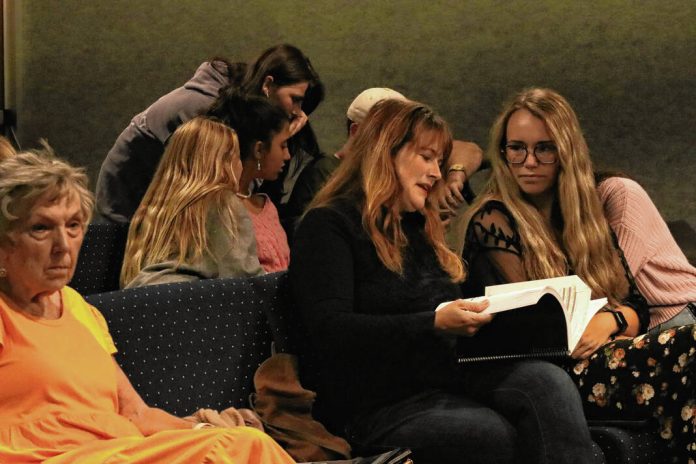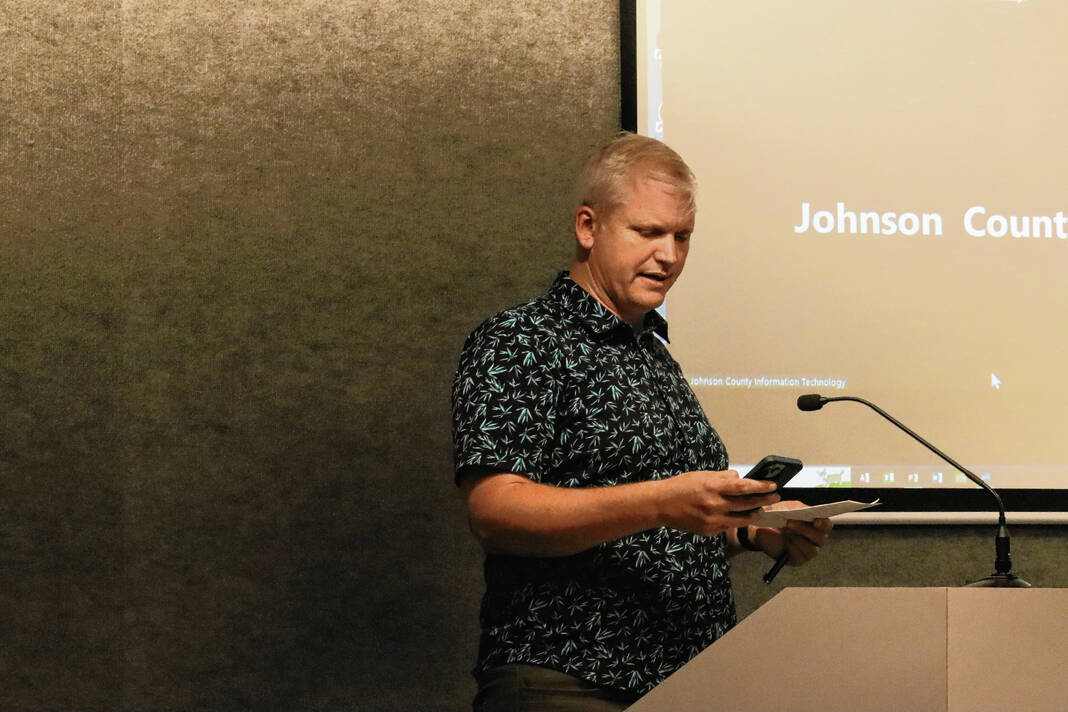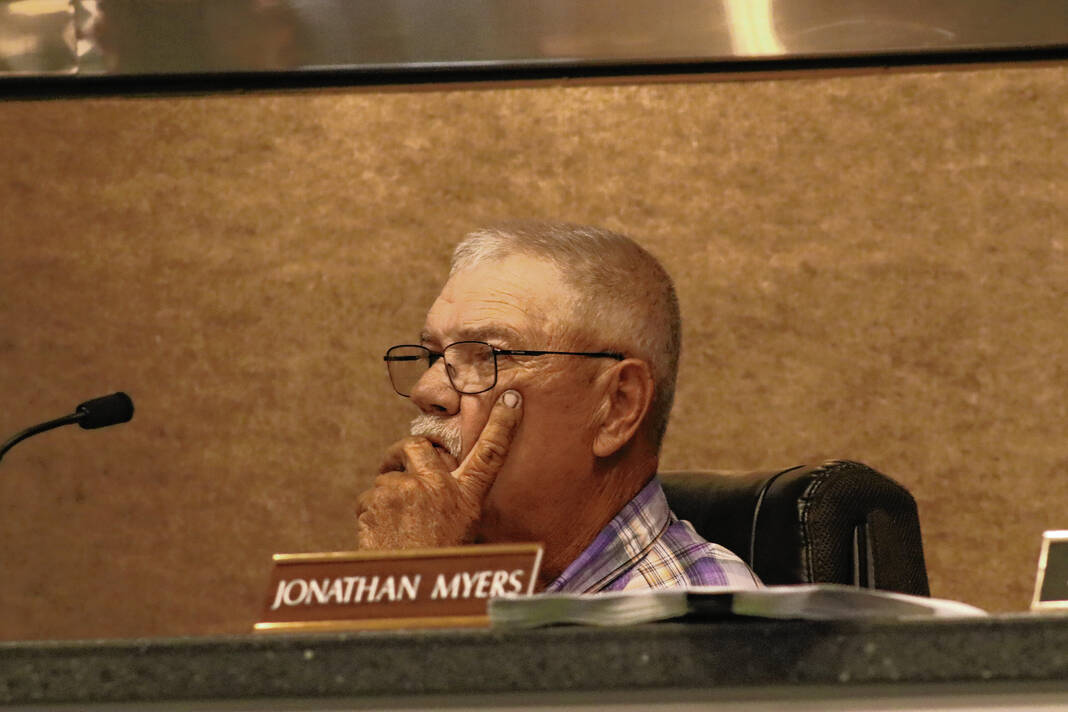As a new county zoning ordinance heads closer to adoption, residents gathered Monday to push for changes to the draft.
After a three-hour meeting Monday, the Johnson County Plan Commission forwarded a favorable recommendation to the county commissioners for the new proposed Unified Development Ordinance, or UDO. Despite being late in the adoption phase, community members advocated for changes to the draft including more flexibility for Planned Unified Developments, or PUDs.
The UDO determines zoning rules and guidelines that apply to areas outside of municipal boundaries in the unincorporated area of the county. The Johnson County Department of Planning and Zoning is putting together the new zoning ordinance with help from American Structurepoint, Inc. and The Planning Workshop, Inc.
The proposed UDO came before the plan commission for a public hearing in July that was extended to Monday’s meeting where community members presented several changes they’d like to see. Consultants previously held an open house in May that detailed notable changes from the current zoning ordinance, including establishing a new subcommittee called the plat committee to handle minor subdivisions and implementing landscape preservation incentives that encourage greenery preservation.
The proposed UDO also created new subdivision types. Consultants proposed creating the agricultural minor subdivision to allow farmers to sell and exchange property without becoming developers, the major traditional residential subdivision with gridded streets and smaller lots and the major conservation residential subdivision to set aside or preserve environmentally attractive or unique areas while grouping homes on a separate portion of the land.
Commentary from the public and city officials Monday centered around topics like PUDs, indoor public assembly hours and occupancy requirements in certain zoning districts, the word “family” in terms like “single-family dwelling” and other topics.
The changes
On Monday, consultants presented several changes they’ve incorporated into the plan, including adding a Fee-in-Lieu program which allows developers to pay the estimated cost of a required sidewalk instead of constructing it, and making carwashes a minimum of 300 feet from any residential district or use after a recent Johnson County Board of Zoning Appeals decision rejecting a Crew Carwash to be built.
Consultants also added PUDs back into the proposed UDO. It was originally left out of the proposed document but put back in after receiving feedback last month. Despite this, city officials still discussed Monday whether including PUDs in the zoning ordinance would create a burden for planning staff.
David Baird, senior project manager from American Structurepoint, said the reason it was taken out originally was as a means to have straight zoning and he said having the mixed-use, development style “realistically is going to be difficult to create.”
“The pros of it (a PUD) is that it can create some, as they’ve (the public) described, some exemplary projects that can create unique opportunities. The cons of it is if they’re not thoroughly reviewed well and they’re just kind of rubber stamped, you can create problems within a traditional zoning area that you did not necessarily intend,” Baird said.
Charlie Canary, plan commission chairman, said he didn’t want planning staff to be so focused on reviewing PUDs that other responsibilities slip through the cracks.
Despite concerns, the plan commission left PUDs in the proposed ordinance when they forwarded a favorable recommendation to the county commissioners.
Residents Sarah and Joshua Brown were proponents of PUDs because they have a dream of creating multi-use hubs next to existing neighborhoods within the next few years. Even though the concept of PUDs was added back in, the Browns didn’t like some of the proposed development restrictions.
“What I would like to ask is that this PUD is relaxed to be more creative, more innovative ..,” Sarah Brown said at Monday’s meeting.“What I’m asking is that we would have within this plan opportunity to create a Johnson County that values the historic design of Franklin, Bargersville, downtown Greenwood and maybe we could replicate that type of design to be small neighborhood hubs around the community. But if we adopt this as it is, that would be very, very difficult to do.”
Joshua Brown asked the plan commission to lower the minimum acreage for PUDs and encouraged the commission to be careful about having too many limitations and “solving a problem that doesn’t exist,” among other suggestions. The proposed UDO stated that PUDs must have a threshold gross area of 25 acres or more.
“We want to free people up to do things, to really empower the plan commission to be able to approve unique things,” Joshua Brown said.
Sarah Brown also wanted livestock uses to be part of the single-dwelling or single-family residential district.
“We really appreciate that our residential zoning includes non-confinement agriculture. I did not see that as a continued list in residential and I think it’s so important to preserve the agricultural, historical values of Johnson County,” she said.
Another change brought up was to eliminate restrictions on hours and occupancy for places of indoor public assembly in agricultural, agricultural/residential, single-dwelling or single-family residential and duplex residential districts. For indoor public assembly in those certain zoning districts, the restrictions were that the facility couldn’t exceed 800 people or last longer than a full day and events could only happen from 7 a.m. to 9 p.m. These rules were taken out of the draft at Monday’s meeting
Commission member Stoney Vann asked that the word “family” back into the proposed UDO, for terms such as “single-family dwelling unit” as opposed to “single dwelling unit.”
Consultants said they originally took out the word “family” to create less ambiguity for non-traditional families so the term “family” isn’t scrutinized and to closer align with how things are enforced from a practical standpoint.
However, Vann said adding the word back in was “a hill we’re willing to die on.” He referenced a duplicated term and definition for “single dwelling unit” that used the word “family” in the definition, which caused him to wonder why the word was taken out when it was used in the definition. Consultants said the definition using the word “family” was the wrong definition and should’ve been taken out of the draft.
Several members of the public clapped at Vann’s strong stance for “family” remaining in the document. The word was added back in as a condition of the commission’s favorable recommendation.
Making a decision
Near the end of the meeting, consultants implemented several additional changes based on the public’s feedback that they said could easily be accommodated and were not contradictory with other ideas they had heard. The changes included adding flexibility for certain aspects of PUDs based on the county’s discretion and adding livestock grazing as a permitted use in single-family residential zoning districts.
At the end of the three-hour public hearing, several county officials wondered where all of this feedback from residents had been earlier in the process.
“I just have a little problem that we’ve discussed this (for over a year) … and now we’re making individual changes here on different people’s (thoughts),” Canary said.
Michele Hansard, director of planning and zoning, encouraged residents to contact her and add comments or corrections to the proposed UDO through the draft plan posted on the county website. She encouraged residents to use that resource and reach out to get specific questions on the UDO answered.
The public can view the draft by visiting shorturl.at/H8miw. The revisions to the document from Monday’s meeting were not updated by press time. Comments or questions about the UDO can be sent to Hansard at (317)-346-4350 or [email protected].









